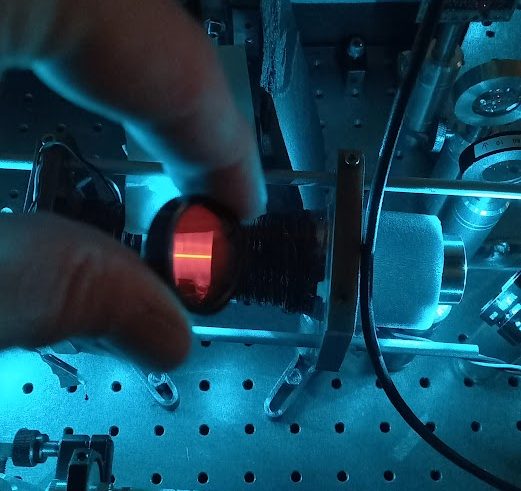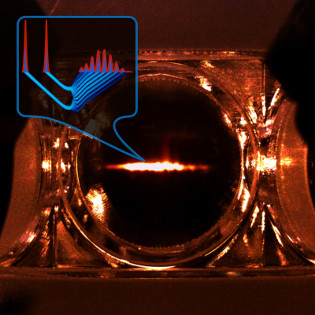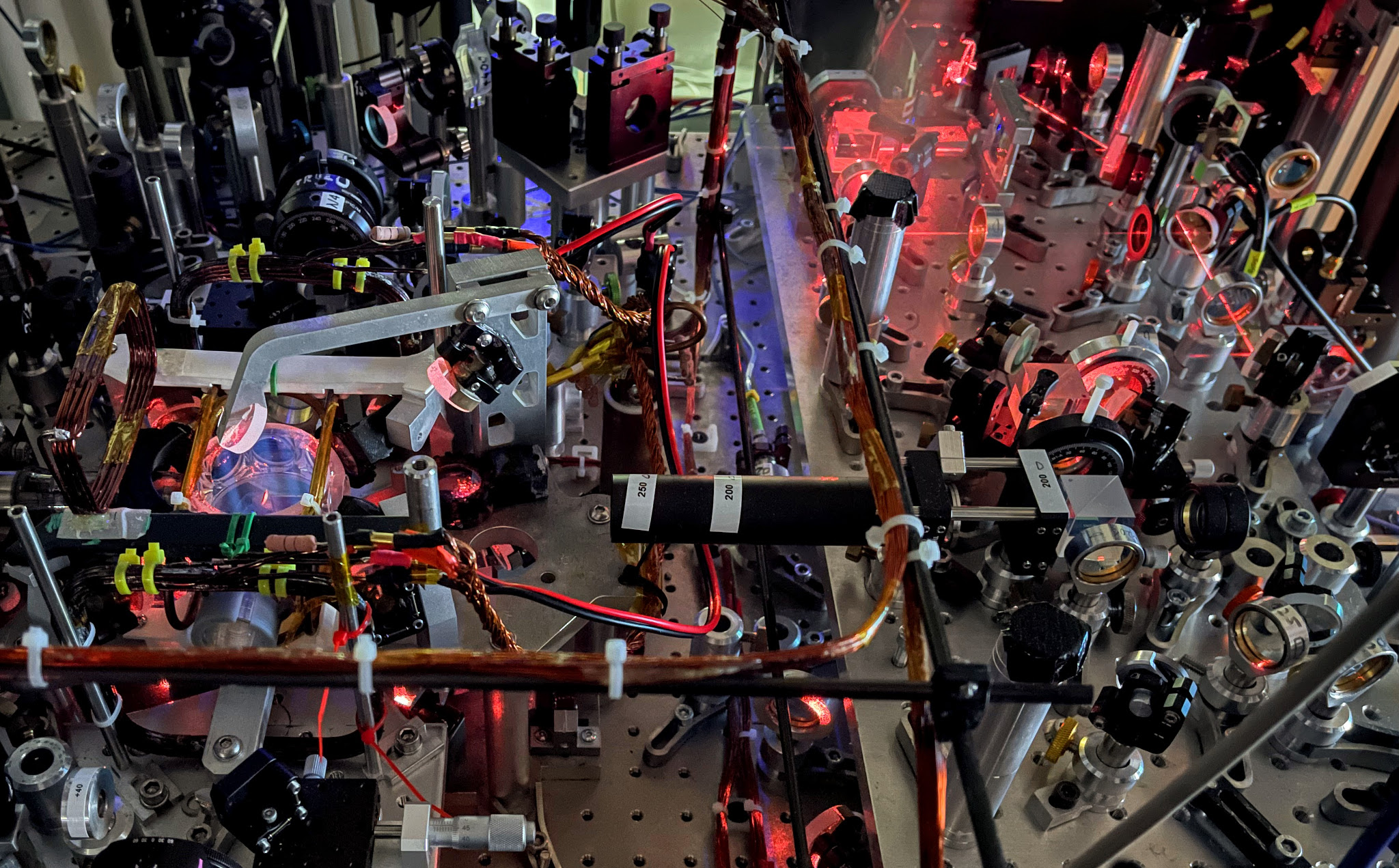Rydberg atoms
In our new experiment, we are exciting Rb atoms to high-lying levels. For example, we excite Rb atoms using two lasers (780 nm and 480-488 nm), which makes them emit fluorescence at all visible wavelengths, as a side effect (see image). More importantly, however, the Rydberg levels bring several new opportunities, including microwave-optical conversion, microwave sensing, and implementation of nonlinear operations between photons, including quantum gates. Our research in that direction is at the moment centered around the project about "Briding microwave and optical domains".

Quantum memory
Our cold-atom quantum memory can implement various protocols while operating with quantum states of light. We store, process, and retrieve light in new experimental scenarios, enabling metrology and communications protocols. The memory is supported by the detection using an image-intensified camera.

Optical signal processing
Quantum light is not necessary to use ideas from quantum mechanics. Optimized mode projections, photon counting, and in general time-frequency processing of light can bring advantages to classical communication in the photon-starved limit. We perform those experiments in both the ultra-narrowband regime using our quantum memory, as well as using ultrafast optics.

Superresolution
Super-resolved imaging and spectroscopy allow studying intricate properties of matter on both microscopic and astronomical scales. We use quantum-informational methods to develop new protocols that extract information about the image from light. To this end, we employ homodyne detection, single-photon counting, and spatial or spectral mode manipulations.